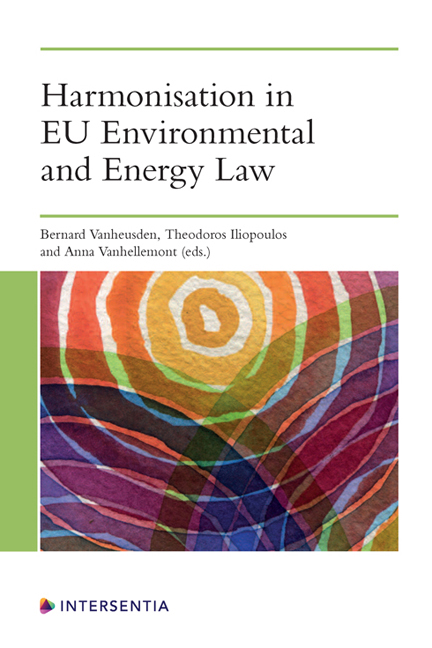Possibilities of and Limits to Codification of EU Environmental Law
Published online by Cambridge University Press: 26 May 2022
Summary
The present chapter will discuss some aspects of codifying EU environmental law. It will limit itself to the more formal side, because the question of how substantive environmental law should be organised is an eminent political one. Indeed, whether air or water pollution should mainly be based on emission limit values or quality objectives, whether economic instruments – taxes, pollution allowance trading systems or other instruments to internalise the externalities of economic activities – should be used is not a question of greater or less intense codification, but depends on political choices. For this reason, only the more procedural provisions of EU environmental law will be discussed.
After clarifying the EU terminology concerning the approximation of different pieces of legislation and the constitutional framework of codification (1), a number of examples will be discussed, where a codification would be possible (2). A third section will describe the principal limits which oppose, at present, such a codification at EU level (3).
CODIFICATION IN EU LAW
The terminology of the TFEU with regard to common, EU-wide legislative provisions is not coherent. While the provisions on the internal market (Article114ss. TFEU) refer to the approximation of laws, Article 191(2) TFEU mentions ‘harmonisation measures’ in a provision which concerns national safeguard measures and which has remained, until now, irrelevant in practice. Both ‘approximation’ and ‘harmonisation’ refer to melting, in one way or the other, national provisions into common, EU-wide rules.
In contrast to this, ‘codification’ of EU legal provisions refers to the activity of bringing different EU-wide provisions into one legal frame. Such a codification takes therefore as a point of departure the existing environmental provisions of EU law and tries to establish common legislative provisions which concern the different sectors of environmental law, such as on water, air, soil, waste or permits.
- Type
- Chapter
- Information
- Harmonisation in EU Environmental and Energy Law , pp. 27 - 44Publisher: IntersentiaPrint publication year: 2022



